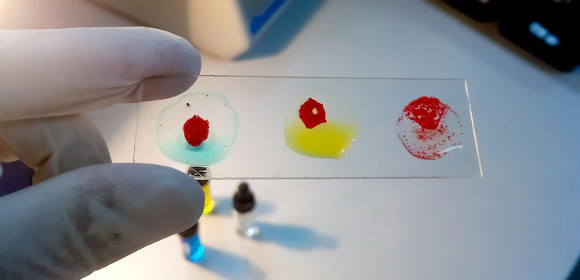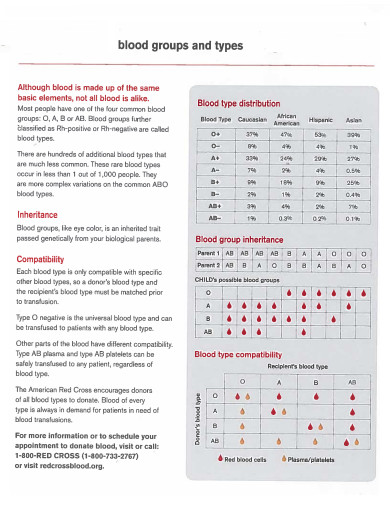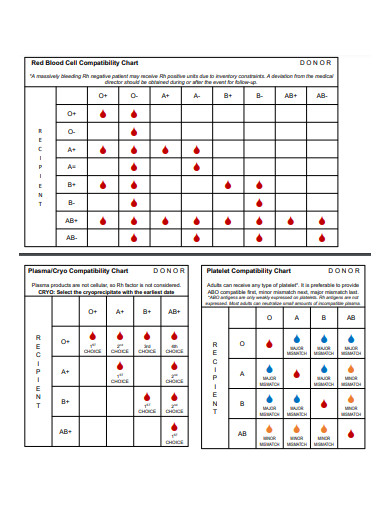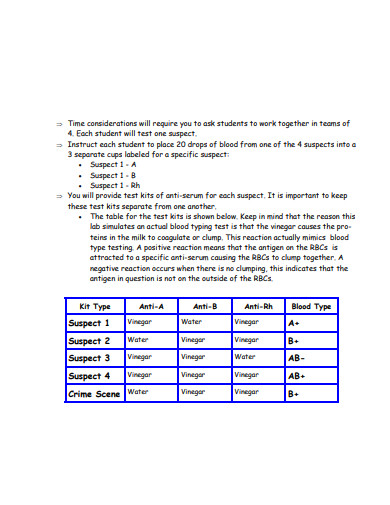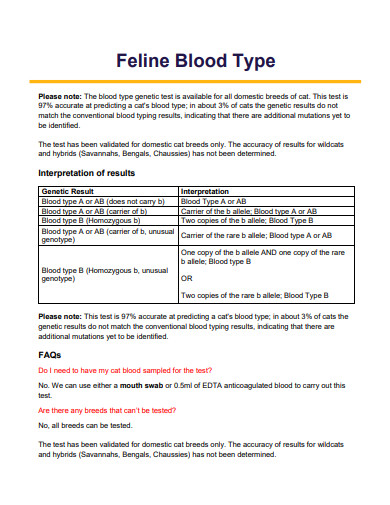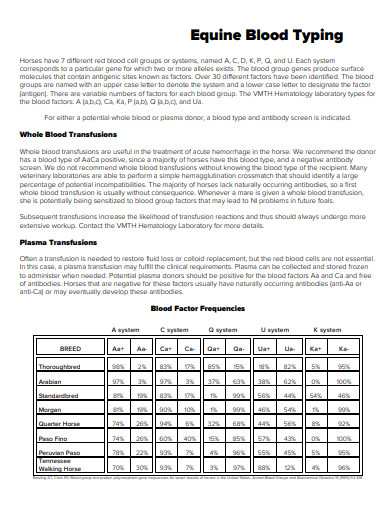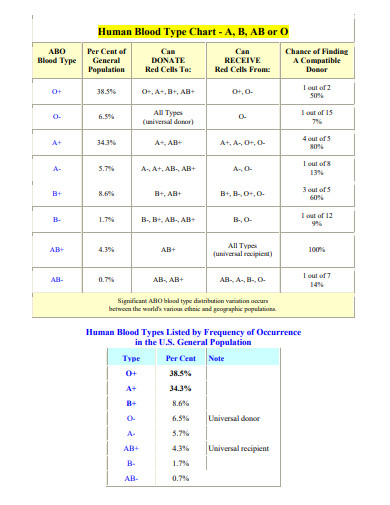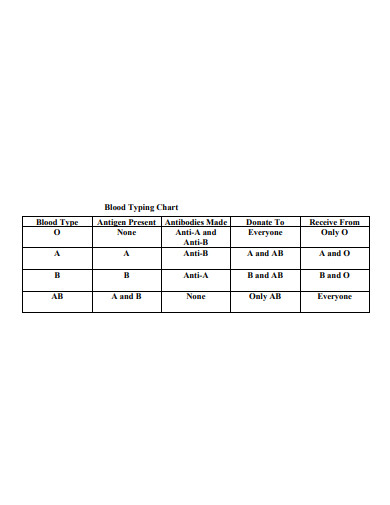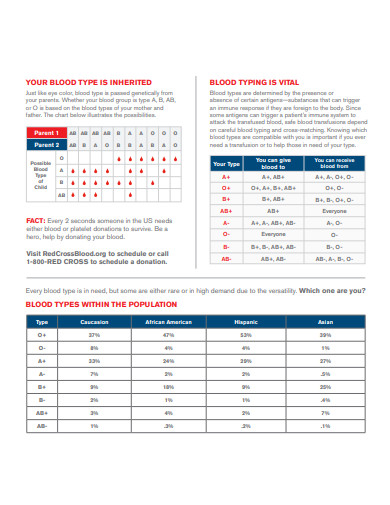In most cases, knowing your blood type in an emergency is essential. Blood typing helps you know and understand any related medical problem you have, such as during pregnancy. Moreover, a blood typing chart can also determine what blood you are compatible with, especially in blood transfusion for another patient’s problem. Occasionally, incompatible blood can cause fatality since blood cells clump up, which is dangerous to health and safety.
FREE 8+ Blood Type Chart Samples
1. Blood Type Chart
2. Blood Type and Compatibility Chart
3. Simple Blood Type Chart
4. Feline Blood Type Chart
5. Equine Blood Type Chart
6. Human Blood Type Chart
7. Blood Type Chart Format
8. Formal Blood Type Chart
9. Professional Blood Type Chart
What Is a Blood Type Chart?
A blood type chart is a valuable tool for identifying different blood types. Just like a blood pressure chart, it helps monitor a patient medical report. The chart comprises various components such as blood type distribution, blood group inheritance, and blood type compatibility. Each component has a description and other icons to represent the basis. Typically, they determine the blood types in the chart through medical examination and the absence or presence of a particular antigen.
How To Make a Blood Type Chart?
There are particular ways that medical staff must match a safe transfusion. A suitable blood transfusion can mean the difference between death and life, which is crucial for an individual’s health care. So, to avoid serious medical incidents and expensive hospital bills for blood complications, creating a comprehensive blood type chart is essential. Don’t stress out if you’re unfamiliar with the steps in making a chart because we’re here to provide them.
1. Make a Draft
To begin with your blood type chart, you must create a draft and try your best to recall all the necessary information that you need to include. As you can see, drafting a chart may help you avoid overlooking some information, especially if you’re making it for the different departments in your institution. It is wise to sit and take your time to make your draft more comprehensive to help medical staffs clearly understand the blood type monitoring for their patient progress note.
2. Include Applicable Chart Information
Ensure that your chart’s scope is wholly relevant to its primary purpose. For instance, you can include the blood inheritance, blood distribution, and most especially the blood type compatibility in your chart. In some cases, you may also add the patient’s name and other additional information to ensure that the information supplied is appropriate.
3. Have a Correct Number of Rows and Columns
Avoid using too many columns and rows to make your chart look neat and clean. Minimizing the use of unnecessary tables helps in presenting a more comprehensive blood chart. Besides, you may add a note on the side if ever you want to explain something regarding the particular blood type. You may adjust their proportions to give way to long and specifically-written entries.
4. Use Legible Fonts
Never use comical and unreadable fonts on your charts, as they can delay the procedure of any medical readings. Always choose fonts suitable for your specified chart, and pick neutral colors for your table.
5. Review and Recheck Your Chart
Once done, always take your time in rechecking your chart. Review the spelling and grammar and other illustrations that are not well-edited. You may seek your other colleagues’ help and ask for their suggestions and comments.
Why is a blood type chart important?
A blood type chart is vital because it contains all the information to determine a particular blood type.
How do you define a blood type?
A blood type may be classified based on the absence and presence of antibodies and antigenic substances on the surface of red blood cells.
Aside from customizing a blood type chart, what else can I use?
You may look for blood type chart templates on our site to use them.
Each of our blood types is unique. Blood types specify who you can give blood to and receive blood from. A blood type chart can determine what type of donation is best for us and the patient’s needs. You can save a life and gain insights regarding blood typing once you avail of the templates on our site.
Related Posts
FREE 5+ Pert Chart Samples in PDF
FREE 10+ Medicine Chart Samples in PDF | MS Word
FREE 10+ Seat Chart Samples in PDF
FREE 10+ Pie Chart Samples in PDF
Free 3+ Eye Color Chart Samples in PDF
FREE 10+ Family Chore Chart Samples in PDF
FREE 10+ Classroom Chart Samples in PDF
FREE 10+ Genealogy Chart Samples in PDF
FREE 10+ Shipping Chart Samples in PDF
FREE 10+ Goal Chart Samples in PDF
FREE 10+ Character Chart Samples in PDF
FREE 10+ Table Seating Chart Samples in PDF
FREE 10+ Classroom Seating Chart Samples in PDF
FREE 10+ Grade Chart Samples in PDF
FREE 10+ Workflow Chart Samples in PDF
